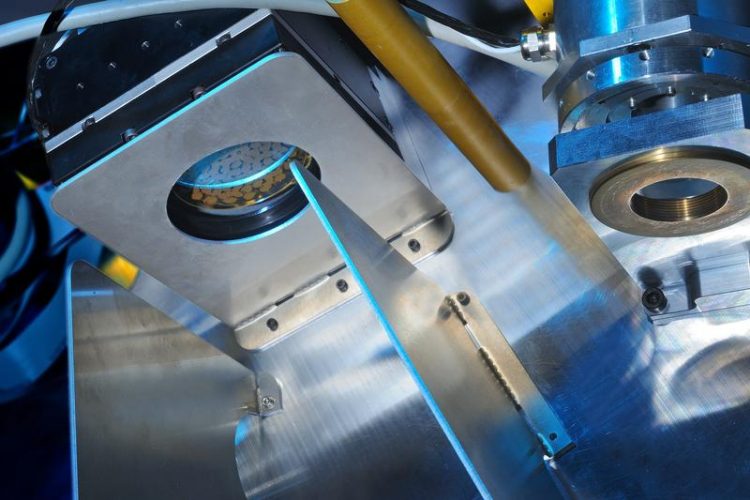Surface Finishing at High Speed

With the integrated mirror, the laser beam is adapted to the processing situation with switching intervals of less than five milliseconds. © Fraunhofer ILT, Aachen, Germany
Even the name promises speed: Since 2016, an international team with companies and institutes from Germany, Belgium, the Netherlands, Israel and Switzerland has been researching and developing “Ultra Dynamic Optical Systems for High-Throughput Laser Surface Processing”. Two new laser optics for the near infrared range will reduce the processing time of surfaces ideally to one-tenth and cut costs by half.
Active beam shaping in milliseconds
One of the optics is specifically designed for the polishing and processing of thin layers with lasers. To accomplish this, the research team relies on a continuously adjustable piezoelectric deformable mirror (PDM). This ensures that the laser beam adapts to the processing situation with switching intervals of less than five milliseconds, thus very quickly.
“The laser beam is reshaped depending on the angle of incidence so that its projection on the work piece surface always has the same shape and the intensity remains constant,” explains the graduate physicist Judith Kumstel, expert in laser polishing at Fraunhofer ILT.
This manipulation is important because only if the three-dimensional beam is continuously adapted at high processing speeds and hits the surface with constant intensity will the result of the laser processing always be the same – even with complex shaped components and constantly changing angles of incidence. On the other hand, if the laser beam projection deforms on slanted surfaces, the quality of the processed 3D surface also deteriorates.
A different approach was developed for laser structuring. The second new optics allows four beams to be used in parallel, instead of the usual single beam, to increase processing speed and productivity. With a diffractive optical element (DOE), the laser beam is split into a square beam of four partial beams.
In conventional multi-beam concepts of this kind, the focusing optics, as well as the shape of the component lead to a distortion of the projected beam. In the ultraSURFACE project, a special system has been developed with which each individual partial beam can be adjusted in its position within milliseconds so that there is always a square beam for processing.
Laser finishing becomes affordable
Two compact optical modules are currently being developed. The ultraSURFACE team will test their potential in a new laser system in various applications until the end of 2018. A Swiss company is building an industrial-grade machine that can be used to polish, structure and coat flexibly, cost-effectively and with unrivaled speed thanks to the quickly interchangeable optical modules. Kumstel explains, “With the concepts developed in this project, surfaces will soon be processed just as well as with conventional systems.
Thanks to the new optics and the new machine, processing will be ten times faster than before, so that laser-based surface finishing will offer a cost-effective alternative to conventional surface finishing for many companies from various industries – even for small job shops”.
Dipl.-Phys. Judith Kumstel
Group Polishing
Telephone +49 241 8906-8026
judith.kumstel@ilt.fraunhofer.de
Dr.-Ing. Edgar Willenborg
Group Manager Polishing
Telephone +49 241 8906-213
edgar.willenborg@ilt.fraunhofer.de
Media Contact
All latest news from the category: Materials Sciences
Materials management deals with the research, development, manufacturing and processing of raw and industrial materials. Key aspects here are biological and medical issues, which play an increasingly important role in this field.
innovations-report offers in-depth articles related to the development and application of materials and the structure and properties of new materials.
Newest articles

Properties of new materials for microchips
… can now be measured well. Reseachers of Delft University of Technology demonstrated measuring performance properties of ultrathin silicon membranes. Making ever smaller and more powerful chips requires new ultrathin…

Floating solar’s potential
… to support sustainable development by addressing climate, water, and energy goals holistically. A new study published this week in Nature Energy raises the potential for floating solar photovoltaics (FPV)…

Skyrmions move at record speeds
… a step towards the computing of the future. An international research team led by scientists from the CNRS1 has discovered that the magnetic nanobubbles2 known as skyrmions can be…





















